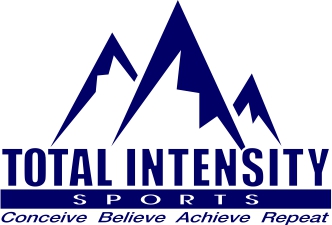
Twelve Critical Steps to Prepare for Your First Ironman – Part One
An Ironman is NOT something to take lightly. Even for an experienced triathlete, there are a LOT of things about Ironman that you just don’t know that you don’t know. The following is a checklist of sorts. A checklist which, if you thoroughly complete each item, will take you from wherever you are currently at to the finish line of an Ironman.
This is the first of two posts, which features the first six of my twelve critical components of Ironman preparation – the second set of six will be coming later in the month!
#1 Hire a Coach
Before you think this is a sale pitch, it’s not. I’ve encouraged many people to work with other coaches if they didn’t see a fit with me. Either way, if you are really serious about training for an Ironman, hire an expert to help you along the way. Find someone who you can see inspiring and motivating you, who is a good teacher, who has experience, and someone you “click” with. It’s got to be a partnership and you need to see them as someone who you want to learn from and work together with. Once you find that best-fit coach, ask all kinds of questions and be open to learning from them… they’ve been around the block a few times, while you are new to the neighborhood.
#2 Prep the Family
Your family and support system is critical to making Ironman training an enjoyable endeavor or a never ending hike through the Mojave without water. Bring them into the discussion way before you sign up. While triathlon training in and of itself is not overwhelming, ramping up to longer events like a half or full Ironman, can crimp other aspects of your life. In the peak of Ironman training, about 12-14 weeks out from race day, you may have weeks of training approaching 20 hours per week. Obviously, if you have a spouse and kids, they aren’t going to see as much of you as they are used to… so they should know what to expect!
#3 Give Yourself Time
While I have trained many people for an Ironman within a year or so, it’s definitely not the best way to approach it. Regardless of your background – running, cycling, or swimming – triathlon and Ironman training is a separate beast. Allowing 24 – 36 months to adequately prepare your body, and learn all there is to learn about the sport is really smart. In those months, you can learn more about the sport – there is more to triathlon than just the Ironman. Compete in various distances – Olympic and half-Ironmans – and enjoy all that the sport has to offer. It can be very addicting!
#4 Base Building: Base Miles / Strength Training / Injury Prevention
Don’t rush this process. Build a foundation. The stronger your foundation, the stronger the house will be. This is where taking 24-36 months comes in. Go through a season of training, or two. Complete a few races – shorter distances and a couple or three half Ironmans. Get into consistent, year-round, strength training that builds functional strength. Develop a routine of not only swim/bike/run training but also strength training and flexibility. Make this a lifestyle, not just a ramp up to an Ironman event.
#5 Endurance Building: Gradual Build Progression / Strength Maintenance / Race Day Terrain Training
Again, don’t rush this. During the final 6-8 months before your Ironman, you are going to want to give yourself plenty of time to build up to the distances of race day. Gradually build your miles up each week, with a week of reduced miles every 3-4 weeks, so that your body has time to acclimate to the training as well as recover in those down weeks.
One other mistake many people make when their training miles get larger – they start to neglect strength training. Shift into a maintenance approach (lower weight, fewer sets), but don’t get into the habit of skipping strength sessions.
While you’re training, make sure the terrain you’re going to be racing on is the same you train on. So, if you’re doing IM Arizona, stay flat. If you’re heading to Penticton for IM Canada, hit the hills. Be sure to factor in any 70.3’s along the way and make sure they complement the terrain of your Ironman course.
#6 Race Day Practice
The more races you do, the less stress and anxiety you will feel. This is especially true with the swim – you really can’t simulate swimming in a pack of swimmers for over a mile. Going through the transition process, which is a little different in an Ironman compared to your local triathlon, is something else which needs practice. So, getting in a few 70.3s in the lead up to your Ironman is really beneficial.
Plus, quite honestly, the best part of triathlon are the races and the environment around race day. All too frequently, after the season is over, I hear people say “I wish I raced more this year…”.

Coming in part two: Bridging the gap between a half and a full ironman; race day pacing; Ironman Wisdom










